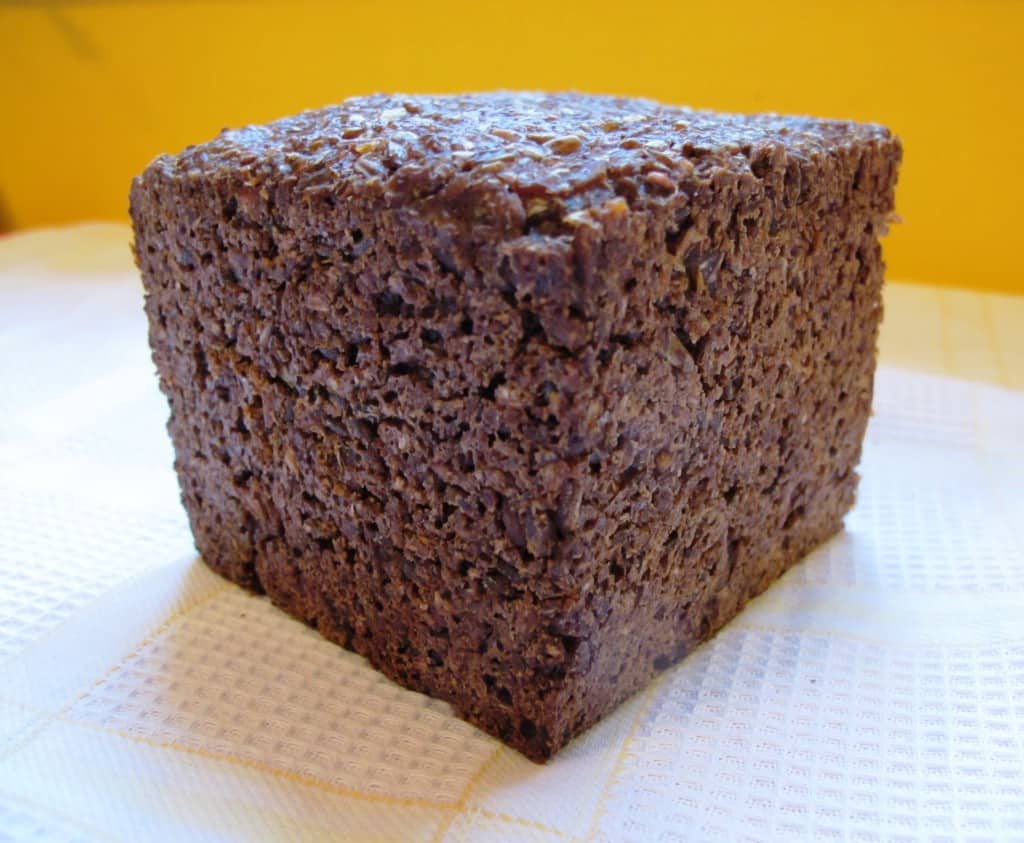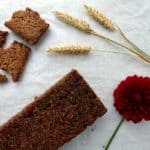It’s hard to find a good recipe for traditional German Pumpernickel so I thought I would try and fill this gap! Here is step-by-step guide to baking the real thing as well as some interesting Pumpernickel facts. Give this Pumpernickel bread recipe a go – you won’t be disappointed!
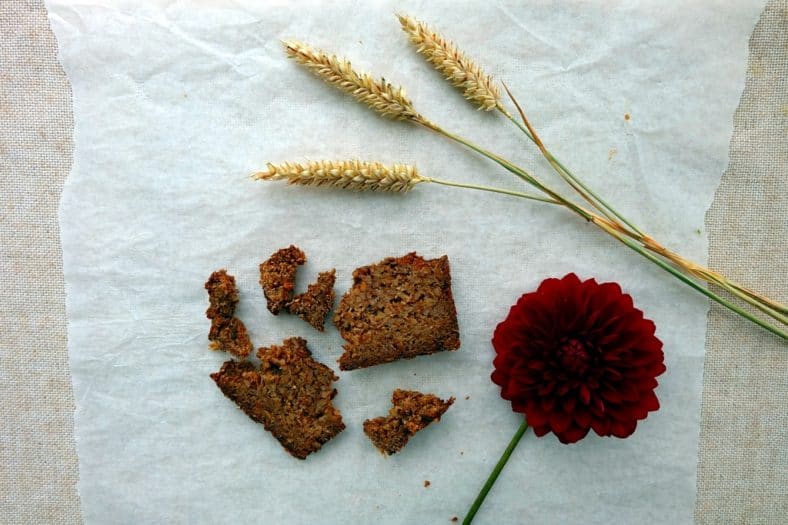
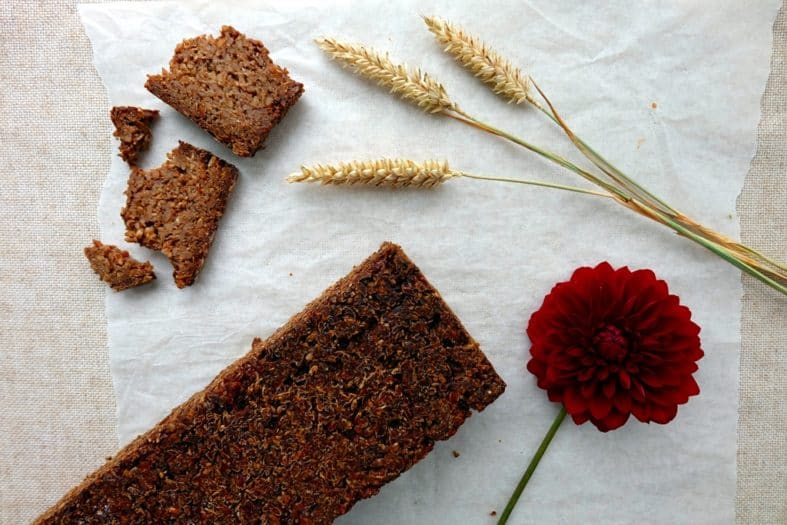
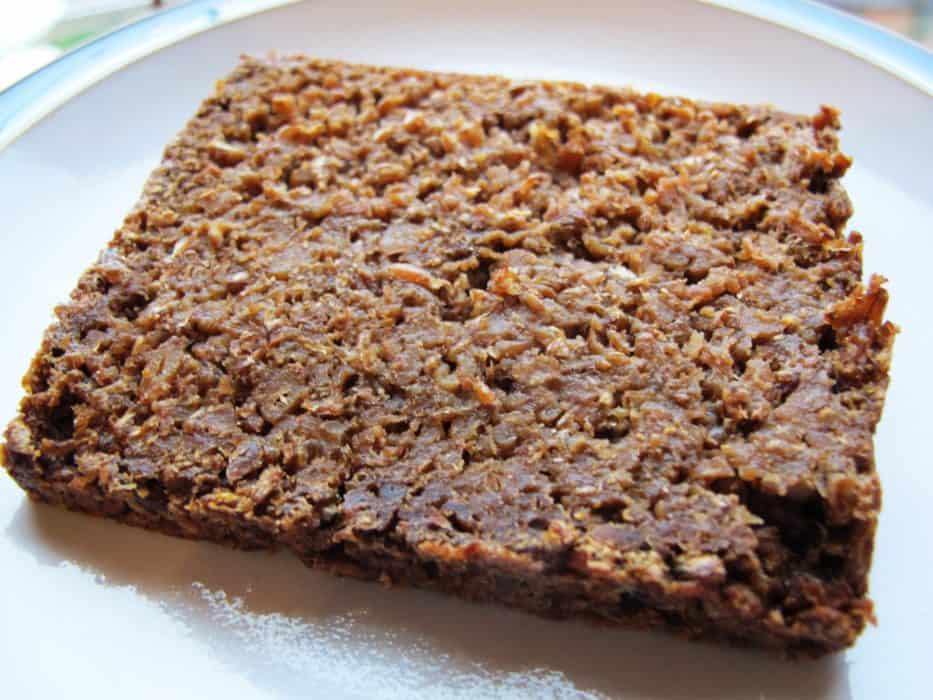
What is Real German Pumpernickel?
- 100% rye bread (only whole rye grain and cracked rye is used for the dough, no milled flour – Pumpernickel has humble origins and for a long time it used to be peasant fare for people with no access to a proper mill)
- Pumpernickel has a rich dark-brown colour, but no crust (it’s baked in fully covered baking tins)
- A very heavy bread with a unique sweet aroma and earthy taste (rye has 7% natural fruit sugar, compared to wheat at 4%, which caramelises during the bake)
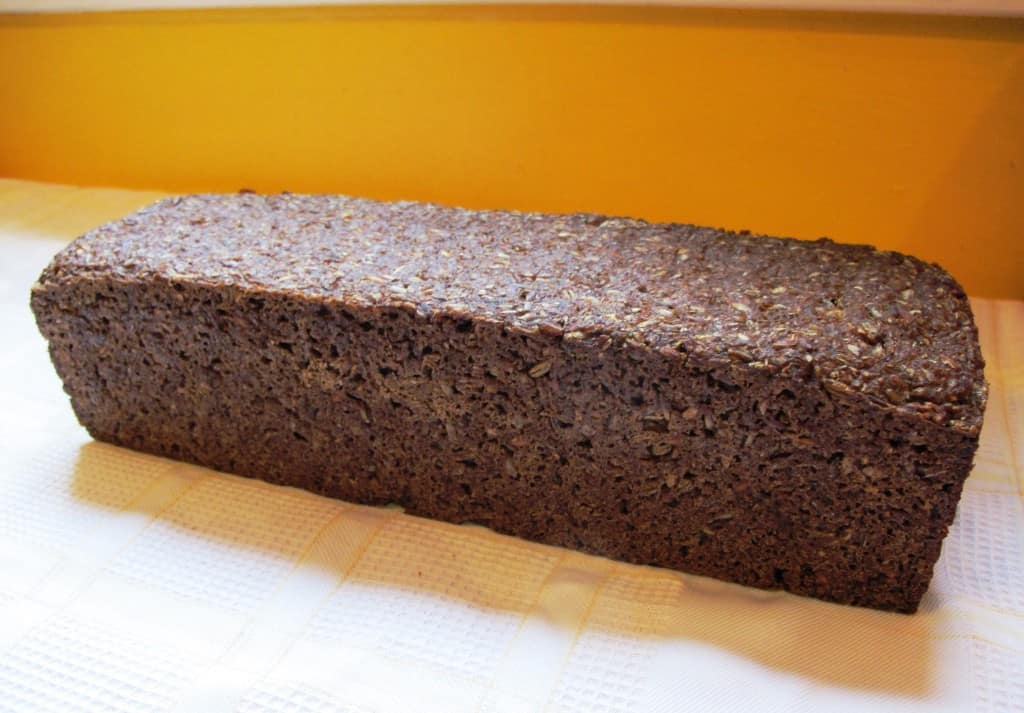
How to make traditional German Pumpernickel?
- All you need is a rye sourdough starter, rye grains, cracked rye, salt, water and syrup.
- No colouring agent such as caramel colour is added.
- The characteristic dark colour is achieved through a very long baking period (about 14 hours in a low temperature of around 120°C) and caramelising fruit sugars.
- In this process it’s important that the steam doesn’t escape – otherwise the bread will completely dehydrate during the long bake. The moisture can be retained by wrapping your baking tin with a few layers of tin foil. However, I invested in a large Pullman pan, a loaf tin with a lid that slides on top to keep the loaf entirely contained. I still wrap a layer of tin foil around to be doubly sure.
- The bread should mature at least 24 hours before cutting to allow the crumb to fully develop (all-rye breads tend to otherwise gum up due to the high percentage of pentosans)
Is Pumpernickel healthy?
- Yes, the starches of real Pumpernickel have undergone so much of a transformation that they are quite easily digested (source: “Bread: A Baker’s Book of Techniques and Recipes” by Jeffrey Hamelman)
- Whole-grain rye contains nearly 15% fibre
- Pumpernickel also has a low glycemic index (less likely to increase in your blood sugar level)
Where to buy Pumpernickel ingredients?
- Organic rye grains (also called rye berries or kernels) from health food stores like Real Foods
- Organic cracked (or chopped) rye and rye flours directly from the mill e.g. Shipton Mill. While Shipton Mill produces coarse cracked rye, I like to mix this up with fine cracked rye by The Prior’s Flour.
- Both Real Foods and Bakery Bits ship worldwide
Important Note
If you can only find coarsely cracked rye, it is highly advisable that this is mixed 50/50 with wholemeal rye flour. You will otherwise find it difficult to form a dough that sticks together. Since using a grain mill (Fidibus Medium flour mill) to mill my own flour at home, it’s been really easy to achieve the right coarseness of cracked rye (I set the dial to medium between fine and coarse), so if you do have a mill at home, it’s going to be really great for this recipe.
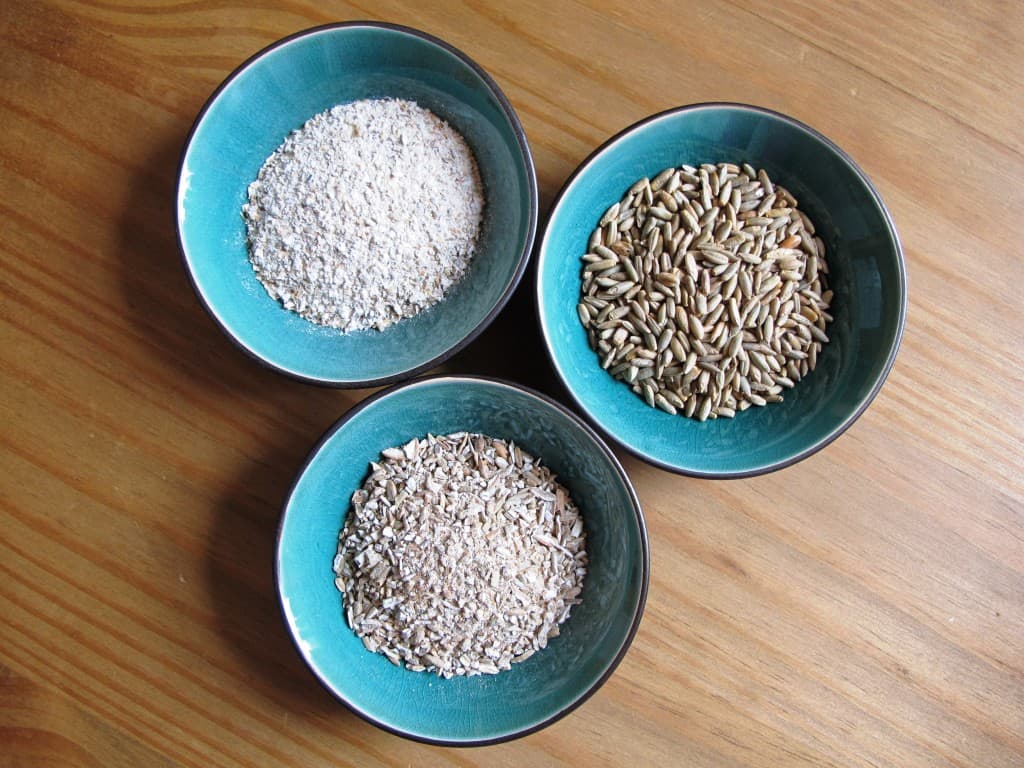
How to make Pumpernickel bread
Pumpernickel Recipe
This recipe bakes one large loaf (tin size 33 cm long x 10 cm wide) and one very small loaf (tin size 17 cm long x 10 cm wide).
Servings 0
Ingredients
Pumpernickel Bread Ingredients
Preferment
- 50 g rye sourdough starter 350g fine to medium cracked rye, 350g water
Scalded Rye Berry Soaker
- 200 g rye berries 200g boiling water
Cracked Rye Soaker
- 150 g fine to medium cracked rye 150g water
Additional Dough Ingredients
- 550 g fine to medium cracked rye
- 150 g water
- 22 g salt
- 120 g maple syrup traditionally cane sugar syrup is used but I prefer maple syrup
- 1 tbsp rapeseed or sunflower oil for the tin
Instructions
How To Make Pumpernickel Bread
All the exact instructions to bake Pumpernickel can be found below. I’ve included sample timings for a weekend bake – starting Saturday, completing the bake on Monday morning and enjoying Pumpernickel bread on Tuesday for breakfast…
Day 1 (Saturday noon/early afternoon)
- Prepare the preferment. Combine in a bowl, cover and leave to ripen for 16 – 24 hours.
- Prepare the scalded rye. Pour the boiling water over the rye grains and leave overnight.
- Prepare the rye soaker. Combine in a bowl, cover and leave overnight.
Day 2 (Sunday)
- 11.30am – Add one litre of water to the scalded rye soaker, bring to a boil and simmer for approx. 1 hour until soft.
- 12.30pm – Strain the rye and discard any remaining water. Set aside to cool.
- 1pm – In a large bowl combine 700g of sourdough (the rest goes back into the fridge for your next bake), the cracked rye soaker, the cooked and cooled rye berries, the 550g extra cracked rye, the water (150g), salt (22g), maple syrup (120g) and mix until the dough comes together well. Mix for a few minutes (I just do this with my hands). Once this is done, cover the bowl and leave to rest for 30 minutes.
Note: The dough should not be wet. It should stick together well and not fall apart. It should peel off the side of the bowl easily and stick on a spoon when held up. - 1.45pm – Oil a large and a small loaf tin (I use a silicone brush to do this), then place the dough into the baking tins. Again, just use your hands to do this and even out the dough surface across the tin. Fill the tins only half full. Cover the tins – if you are using Pullman forms, use the Pullman tin cover, otherwise use a polythene bag to ensure the dough doesn’t dry out.
- 2pm – Leave to prove for 3 hours (depends on room temperature, so do keep an eye on the dough during this time). The dough will have risen, probably not quite to the top of the tin, but it should have visibly risen.
- 4.30pm – Preheat the oven to 150°C.
- 5pm – Brush the top of the dough with a little water. Fully wrap the baking tins with two tight-fitting layers of tin foil to avoid the steam escaping and the dough drying out during the long baking process. Note, that I cover even the Pullman tin in these additional layers. Place the wrapped tins at the bottom shelf of the oven and bake for approximately 14 hours (best done overnight).
- 6pm – Turn down the temperature to 120°C.
Day 3 (Monday morning)
- 7am – After baking, turn off the oven and leave the baking tin in the cooling oven for another hour.
- 8am – Take the loaf out of the baking tins and wrap in a kitchen towel for another 24 hours.
Day 4 (Tuesday morning)
- Cut into thin slices and enjoy with butter and jam or smoked fish for a hearty breakfast!
